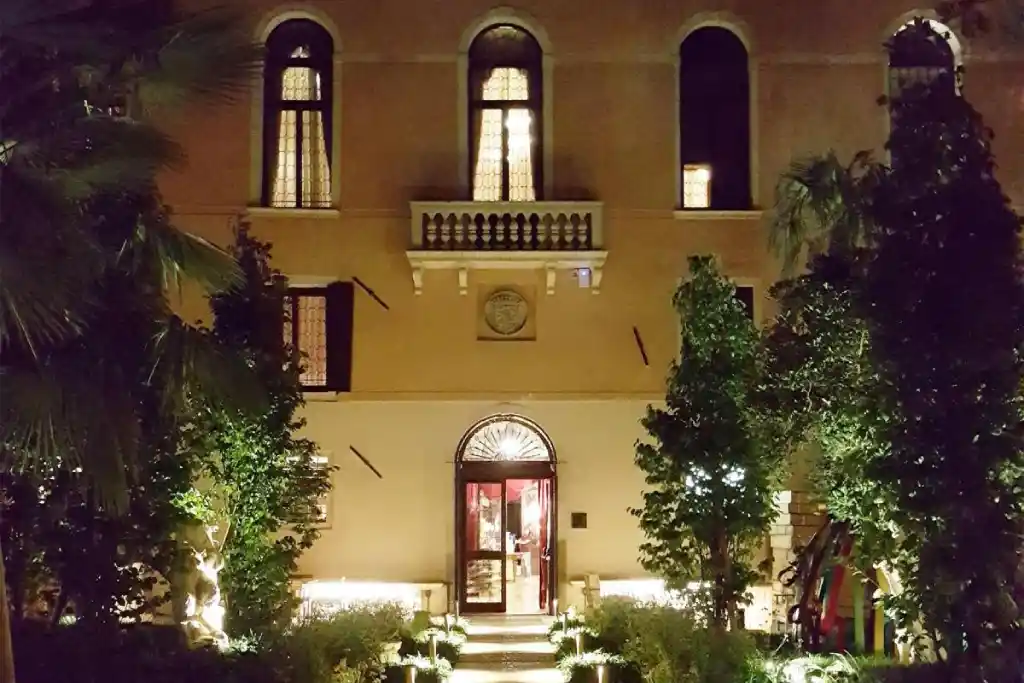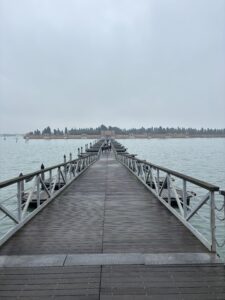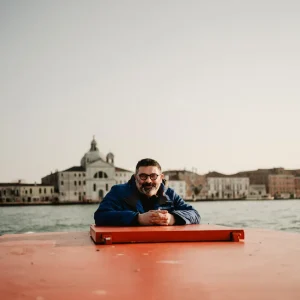Authentic Venice Experiences You Can Actually Live — With Tour Leader Venice
Every traveler dreams of seeing Venice. But let’s be honest — most visitors barely scratch the surface. They take a gondola ride, visit St. Mark’s Basilica, snap a selfie on the Rialto Bridge, and leave thinking they’ve “done” Venice. The truth? They’ve only seen a postcard.
Venice isn’t a city you simply visit; it’s a city you live. It’s made to be felt, tasted, rowed through, and shared with locals who still guard its soul. At Tour Leader Venice, we design experiences that take you beyond the crowds and into the heart of the real city — the one we Venetians call home.
Here are ten authentic experiences you can actually live — each one rooted in real Venetian life, crafted by locals, and available only through Tour Leader Venice.
🍷 Eat & Drink Like a Local: The Venice Cicchetti & Wine Tour
If you really want to understand Venetians, skip the fancy restaurants and follow them to the bacari — the tiny bars where locals eat, drink, and gossip standing shoulder to shoulder. Our Venice Cicchetti & Wine Tour is the ultimate crash course in Venetian life.
You’ll wander through hidden alleys of Cannaregio and Dorsoduro, tasting bite-sized seafood snacks called cicchetti and sipping regional wines poured straight from the tap. You’ll meet real Venetians — the kind who’ll tell you where to find the best sarde in saor or which Spritz bar has the strongest pour.
Local tip: Never order an Aperol Spritz if you want to blend in — go for a select spritz, the true Venetian classic.
🚤 See Venice from the Water: Private Boat Tours & Lagoon Life
Yes, everyone takes a gondola ride — but few ever glide through the quiet back canals where the real city lives. Our Private Gondola Ride and Private 1-Hour Boat Tour turn this iconic experience into something personal, elegant, and entirely crowd-free.
We’ll take you through secret waterways only locals know, show you the hidden gardens behind palazzi, and reveal quiet corners where gondoliers still hum old songs. You’ll see why Venetians say, “Venice was meant to be seen from the water.”
For something slower and more soulful, join our Venice Sunset Tour on a Traditional Bragozzo Boat — a wooden fishing vessel once used in the lagoon. Watching the sun sink behind the bell towers while sipping local Prosecco might just be the moment you fall in love with Venice for good.
And if you crave a little glamour, there’s nothing quite like our Riva Experience. These vintage wooden boats are the Ferraris of the lagoon — pure elegance, polished mahogany, and timeless style.
🪞 Discover the Artisans Who Keep Venice Alive
Venice has been crafting beauty for a thousand years. Glass, silk, masks, and mosaics — each tells a story of skill passed from hand to hand. With Tour Leader Venice, you can meet the people behind the legends.
- 🔥 Learn how to blow glass in a Murano Glass Workshop — and try it yourself.
- 🎭 Create your own masterpiece in our Venetian Mask Workshop.
- 🎨 Make marbled paper in the Traditional Paper-Making Workshop.
- 🧵 Step inside the legendary Tessitura Bevilacqua, where velvet is still woven on 18th-century looms for kings and fashion houses alike.
These experiences aren’t just “classes.” They’re living connections to the city’s creative heart — stories of families who refused to let traditions disappear.
🍝 Cook Like a Venetian: Food with a Story
Venetian cuisine is simple, seasonal, and full of character — much like the city itself. Through our culinary experiences, you’ll taste the history of the lagoon in every bite.
Start in Treviso (yes, the birthplace of tiramisù!) with our Tiramisù Cooking Class — where you’ll learn the original recipe that made this dessert world-famous. Or meet Nonna-style chefs who’ll show you how to make bigoli in salsa or risotto di gò using ingredients straight from the Rialto Market.
Pro tip: Visit the market early with your guide — it’s when locals do their shopping and the city still smells like the sea.
If you’d rather eat than cook, our Cicchetti Tour is your table-hopping ticket to Venetian happiness.
🕊️ Explore Venice Off the Beaten Path
When most travelers pack into St. Mark’s Square, locals retreat to their favorite quiet corners. That’s exactly where we take you with our Off-the-Beaten-Path Orientation Tour.
You’ll wander through Sant’Elena and San Pietro di Castello — peaceful neighborhoods where laundry still flutters between windows and children play in the squares. You’ll meet artisans, stop by family-run bakeries, and learn how Venetians still live full-time in this remarkable floating city.
Want to go deeper? Pair it with skip-the-line Doge’s Palace tickets and St. Mark’s Basilica tickets for a full picture of Venice — both its grandeur and its quiet soul.
💍 Romantic Venice: For Lovers & Dreamers
Venice has a way of turning every walk into a love story. Whether you’re planning a proposal, honeymoon, or just a beautiful day together, our romantic experiences turn moments into memories.
- 📸 Capture your love on our Romantic Photoshoot in Venice.
- 💒 Say “I do” in style with the Exclusive Wedding Gondola.
- 🥂 Enjoy a private toast on the water during your Gondola Experience or Sunset Bragozzo Cruise.
Because in Venice, romance doesn’t have to be planned — it just needs the right setting.
🏝️ Hidden Islands: Murano, Burano & Beyond
Beyond Venice’s main canals, the lagoon hides an archipelago of surprises. Murano glitters with glass, Burano dazzles with colors, and Torcello whispers with ancient silence.
Our 6-Hour Island-Hopping Tour takes you through all three — plus hidden stops locals love. You’ll visit glassblowers, meet lace-makers, and lunch by the water where time feels suspended.
Prefer a slower pace? Choose a Slow Lagoon Experience to explore lesser-known islands like San Francesco del Deserto or Vignole, where monks still tend gardens and fishermen mend nets under the sun.
🚗 Day Trips Beyond Venice: Veneto’s Hidden Treasures
Venice might steal the spotlight, but the surrounding Veneto region is full of gems — rolling vineyards, medieval towns, and mountain views that feel like a painting.
- 🍇 Taste the sparkle of life on our Prosecco Hills Tour or Prosecco Drive & Cooking Experience.
- 🏰 Walk through history on our Walled Towns & Palladio Tour.
- 🍷 Fall in love with Verona and Amarone on our Wine & Romance Tour.
- 🏔️ Head north to breathtaking peaks on the Dolomites Tour — a true escape from the lagoon.
Each experience starts right in Venice with private transfers and local guides — no stress, no crowds, no wasted time.
🧳 Arrive in Style: Private Transfers that Feel Effortless
Let’s be real — arriving in Venice can be confusing. Boats, bridges, no taxis… it’s magical but chaotic. That’s why we created our Private Transfer Services — to make sure your first (and last) impression of Venice is pure joy.
- ✈️ Airport to Hotel Transfer — direct, private, and stress-free.
- 🚢 Cruise Terminal Transfer — perfect for pre- or post-cruise stays.
- ❄️ Transfer to the Dolomites — for ski lovers and mountain dreamers.
All transfers include local assistance and private boats — because in Venice, even getting around should feel like part of the adventure.
🎟️ Bonus: Skip-the-Line Tickets for Venice’s Must-See Icons
Even the most authentic traveler can’t skip the city’s masterpieces — you just need to experience them the smart way. That’s why we recommend securing fast-track Doge’s Palace tickets, St. Mark’s Basilica tickets, and a Peggy Guggenheim Collection pass before you arrive.
Pair them with our Doge’s Palace & Basilica Private Tour for the ultimate VIP experience — no queues, just pure history.
🌅 The Real Venice Awaits
Venice is many things — romantic, mysterious, chaotic, timeless — but above all, it’s alive. It’s not a museum; it’s a community. Every bridge, market, and canal tells a story still unfolding.
When you explore with Tour Leader Venice, you’re not just checking off landmarks. You’re joining that story — discovering the Venice that locals live every day.
Ready to see the real Venice? Book your private Venice tour today and experience the city the way it was meant to be lived — slowly, beautifully, and authentically.
✨ Book Your Authentic Venice Experience Now
FAQs — Authentic Venice Experiences with Tour Leader Venice
What makes Tour Leader Venice experiences authentic?
Every tour is crafted by real Venetians who live and work here year-round. From our Cicchetti & Wine Tour to the Off-the-Beaten-Path Orientation Tour, we take you beyond the tourist circuit into neighborhoods, artisan studios, and local kitchens where Venice still breathes. You’ll meet glassblowers, mask makers, rowers, and bakers — not actors, but the people who keep the city alive.
Can I customize my Venice experience?
Absolutely. All Tour Leader Venice tours are private and fully customizable. You can combine a Murano Glass Workshop with a Romantic Gondola Ride, add skip-the-line tickets for the Doge’s Palace & St. Mark’s Basilica, or finish your day with a Slow Lagoon Sunset Tour — all arranged seamlessly by your guide.
Are these tours suitable for families or first-time visitors?
Yes. Whether you’re visiting with kids, grandparents, or as a couple, our experiences are designed for comfort and discovery. Families love the Venetian Rowing Experience and hands-on Mask-Making Workshop, while first-timers often start with the Private Grand Canal Boat Tour for an unforgettable introduction to the city. Each tour blends storytelling, local insight, and flexibility — so you can experience Venice at your own rhythm.







